► CAR drives the new Golf GTI 8.5
► Manual gearbox no longer available
► Still the ultimate everyday FWD hatch?
Hiding within the eighth-generation Golf GTI was a truly great hot hatch. Yet it was one that didn’t get the praise it deserved owing to some errors made by Volkswagen on the Mk8 Golf as a whole. Principally, a frustrating infotainment system riddled with early software issues and a cabin that wasn’t up to the usual Golf quality.
It didn’t help that it replaced the Mk7 GTI, one of the best cars (if not the best) to wear the famed nameplate. It meant owners, usually jumping at the chance to get into a new Golf GTI, clung onto their Mk7s, with prices still ridiculously high for a last-of-the-line 2020 example of this generation.
Volkswagen wasn’t long bringing the facelifted Golf 8.5 to market, and neither was the new GTI. So can it prove to be the remedy it needed?
At a glance
Pros: Strong performance, significant cabin improvements, everyday usability
Cons: A bit quiet for a hot hatch, no manual option, touchscreen can still be annoying
What’s new?
The GTI ushers in many of the changes seen elsewhere on the recently introduced standard Golf 8. The main difference is a new infotainment system, which is quickly being fast-tracked to be implemented across the full Volkswagen range at VW boss Thomas Schafer’s request. It’s bigger (obviously), and though not as well-integrated into the dashboard as the outgoing car, is a significant improvement, which will be explored later.
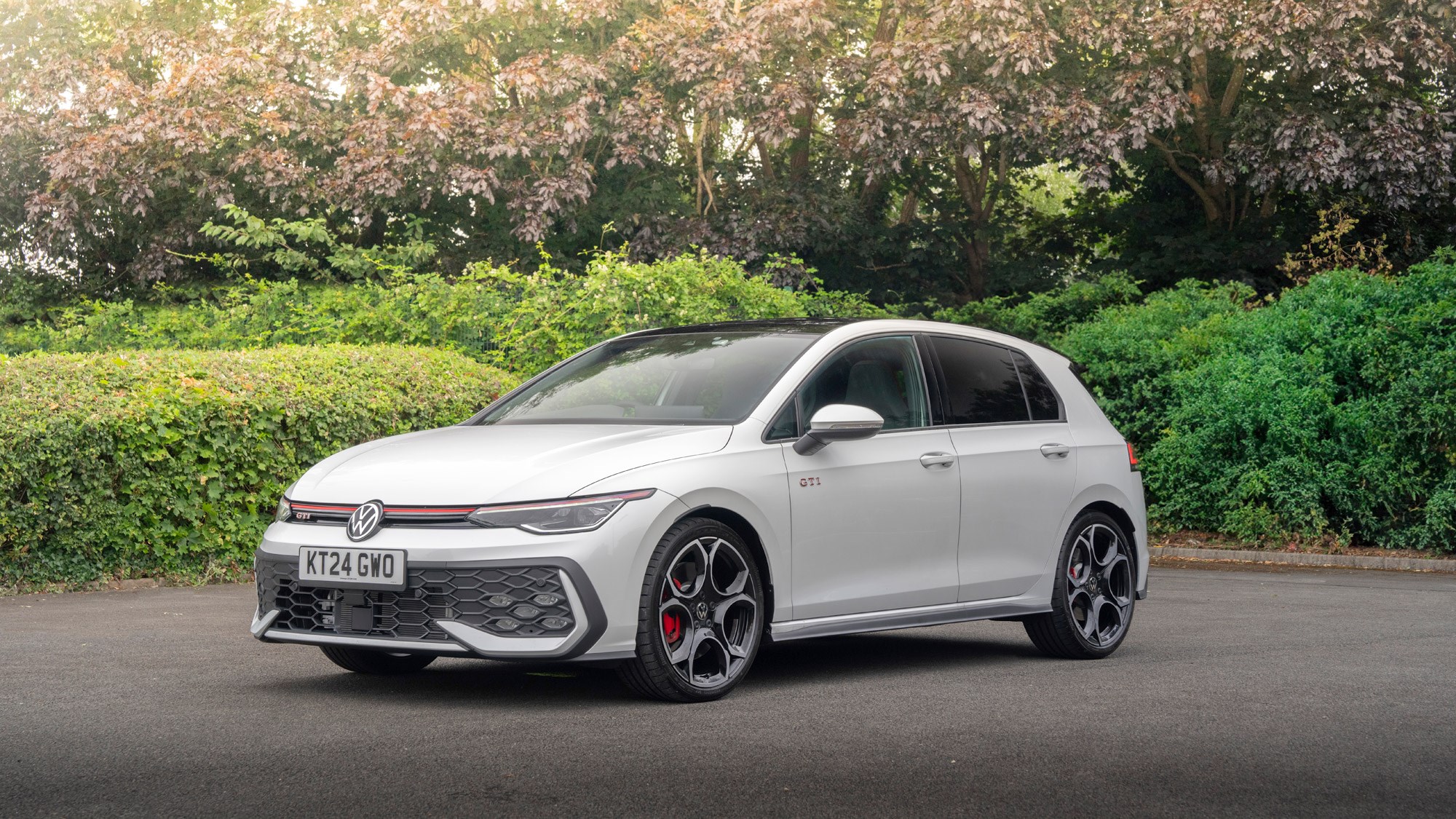
There are welcome updates to the rest of the cabin in terms of quality and a tweaked exterior design that gives the GTI fancier lights both front and rear. On top of this is a more aggressive-looking front bumper and a new set of alloy wheels that certainly have a bit of Alfa Romeo about them.
The GTI also gets a 20bhp power boost, and – much to the disappointment of purists – no longer a manual gearbox option.
What are the specs?
What’s that, no manual gearbox? ‘I’ll take my money elsewhere’… well, good luck. You can still (just about) get your hands on a new manual Focus ST and if you don’t want that, a manual Toyota GR Yaris or Civic Type R are considerably more expensive. So the seven-speed DSG is now your only option, and as before, drive is delivered to the front wheels.
It’s Volkswagen’s long-serving turbocharged 2.0-litre petrol EA888 unit putting out 262bhp and 273lb ft of torque here. Power is up 20bhp but torque remains the same, as does the 5.9-second 0-62mph time, and it maxes out at 155mph if given the opportunity… I can confirm it can on an autobahn.
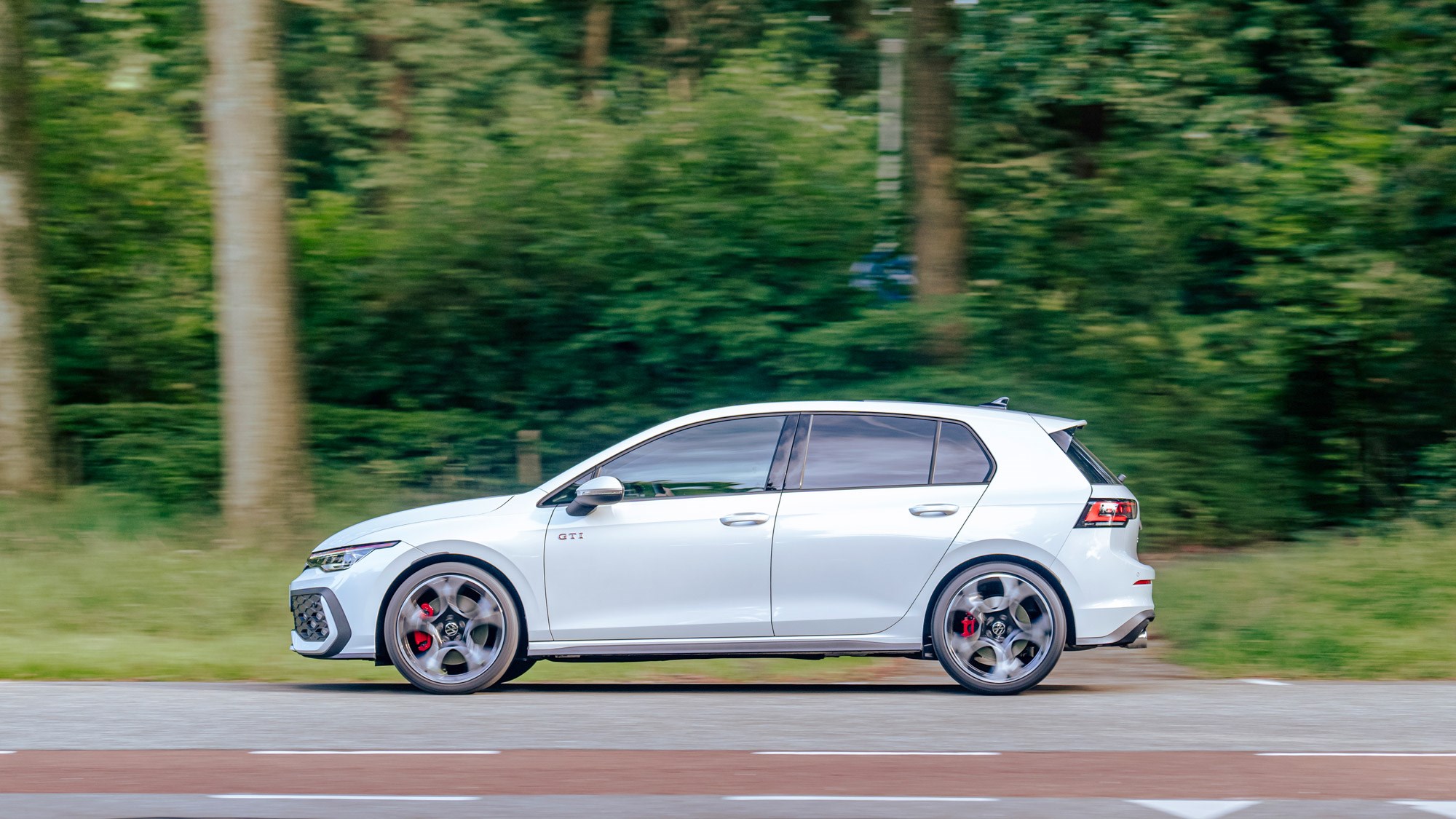
The good thing about it being the EA888 is that as long as you don’t hoon it around every apex, fuel economy isn’t bad at all. Volkswagen claims 39.6mpg, with CO2 emissions of 162g/km decent for a hot hatch without any hint of hybridisation.
How does it drive?
The Golf GTI has always been defined as one of the best hot all-rounders for its sheer daily usability, and for all the pre-facelift car’s interior foibles, one thing that did not need much changing was how it drove.
As with most sporty Volkswagens, you’ll want to option its £720 DCC adaptive dampers if you want the full breadth of its abilities, from more supple cruiser to more enthusiastic B-road blaster. With DCC you adjust the level of comfort, or not, with a scale on a touchscreen, and the difference between the comfiest and harshest setting is impressive. It’s especially a must if you’re going for the big alloys, though it always has a slight firmness to it even in the softest setting.
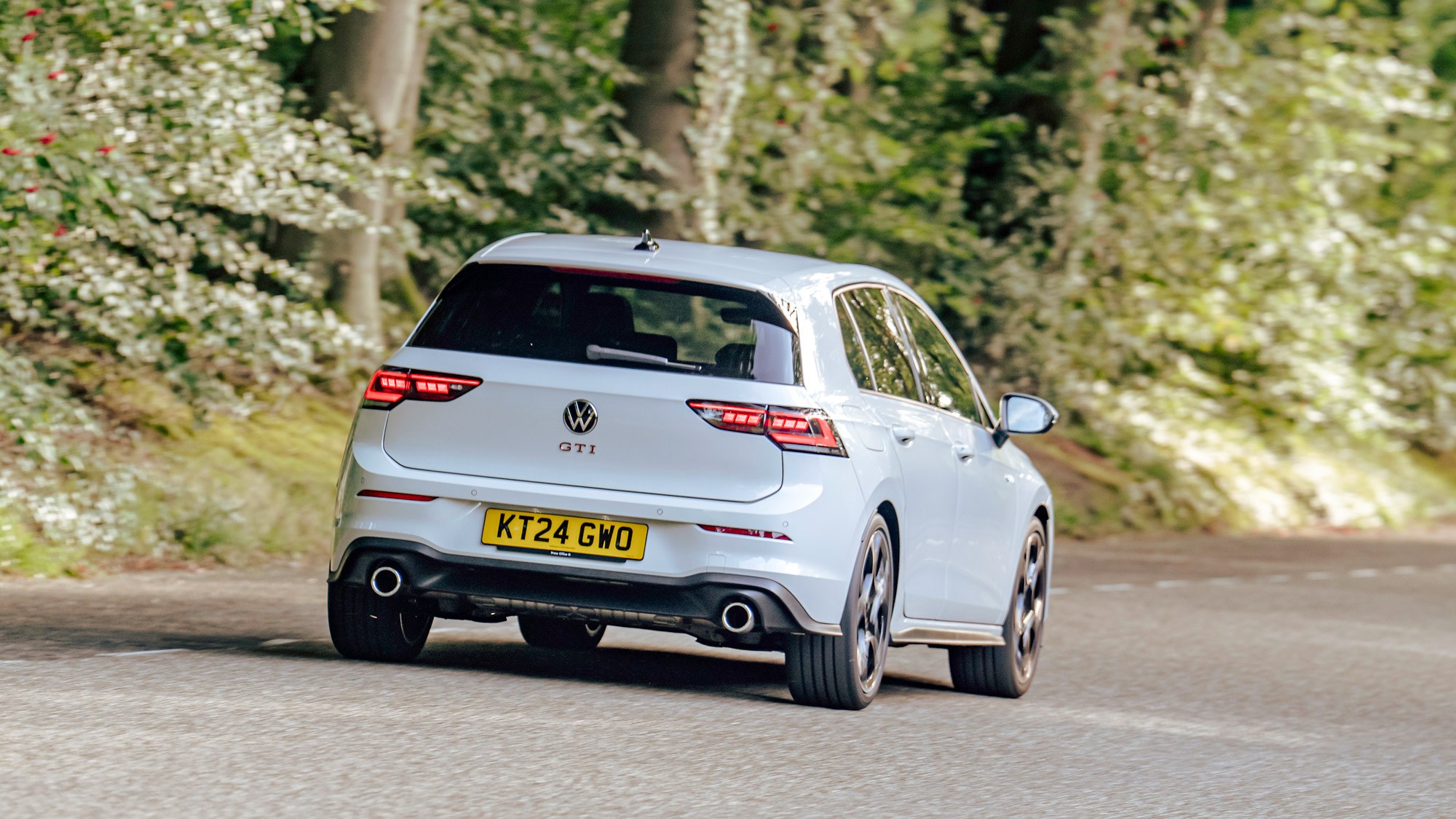
The previous model never exactly felt slow, but having that extra 20bhp at your disposal certainly helps out – it’s never as quick a Golf R, unsurprisingly, but there’s plentiful grip and no shortage of traction. If you want that extra bit of liveliness, the 296bhp GTI Clubsport could be the answer, though we’re yet to get our hands on it. The sound is always a bit muted, mind, especially for a hot hatch. My inner chav thinks a visit to Akrapovic for a more vocal exhaust could be in order.
The steering is quick and precise, with its impressive chassis keeping the car flat through even sharper corners. The clever traction control system avoids any understeer and always feel more controlled and linear, regardless of how hard you try to ruffle its feathers.
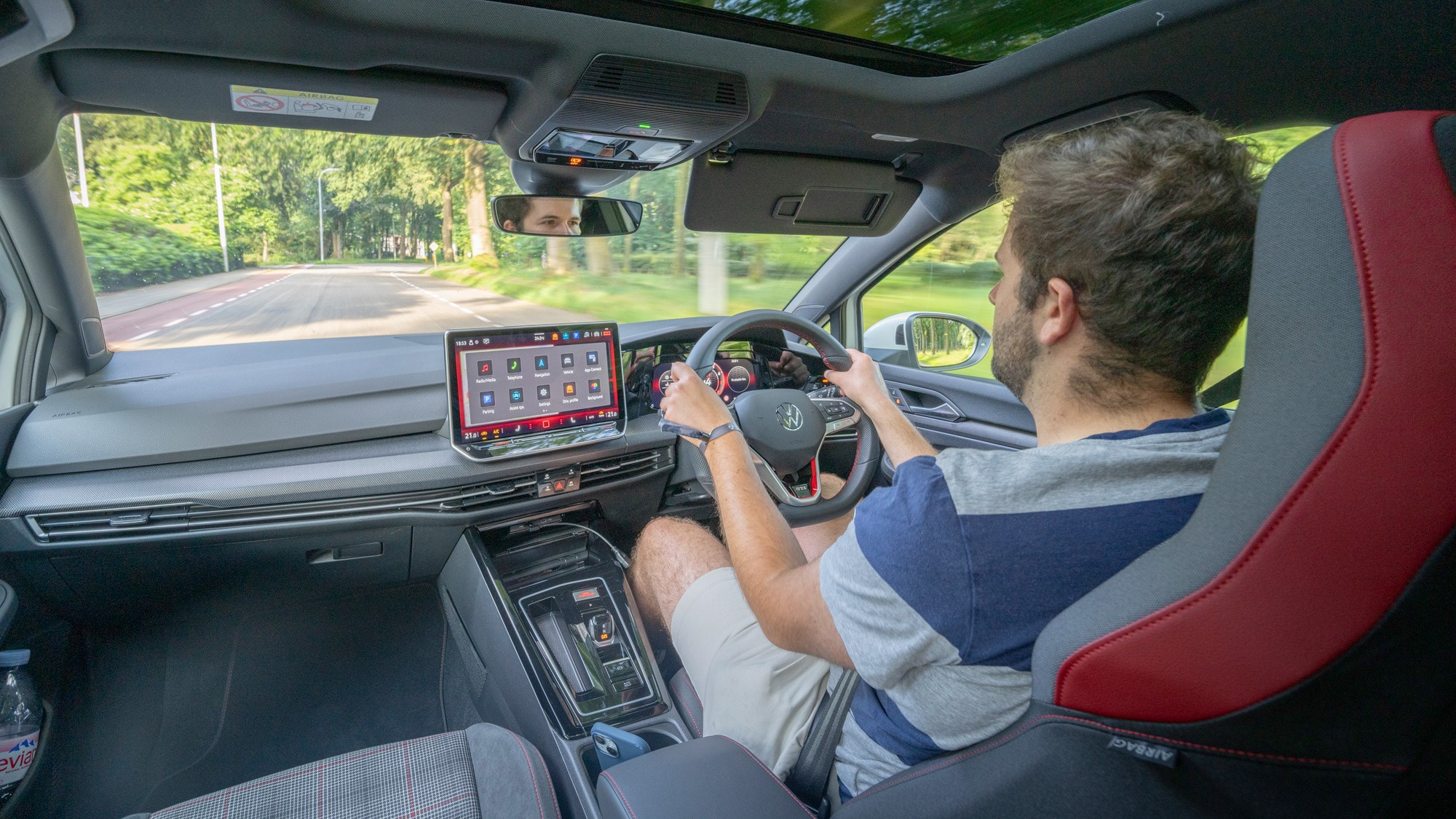
Yes, a Civic Type R will carry you through a corner quicker still, but lacks the GTI’s sheer all-round ability. I drove the Mk8 GTI as part of a road-trip feature from the UK to Wolfsburg, and can confidently say there are few hot hot hatches that would have been so pliant over such a long distance.
What’s the interior like?
If you haven’t got the gist already, the Mk8’s interior was a bit of a letdown, especially when compared to the sensational Golf Mk7’s cabin. Volkswagen has worked hard to improve it, and – like the regular Golf – it’s paid off.
The touchscreen has grown in size to 12.9 inches, and though it’s still predominantly used to control everything, it’s a big improvement. There are new shortcut buttons that can be accessed with one quick swipe of the screen, and the responsiveness is a huge change over the previous car. Volkswagen has also dropped the awful touch-sensitive pads on the steering wheel in place of actual proper buttons. That said, I still think a few more physical controls would make a world of difference overall (see the Skoda Octavia vRS).
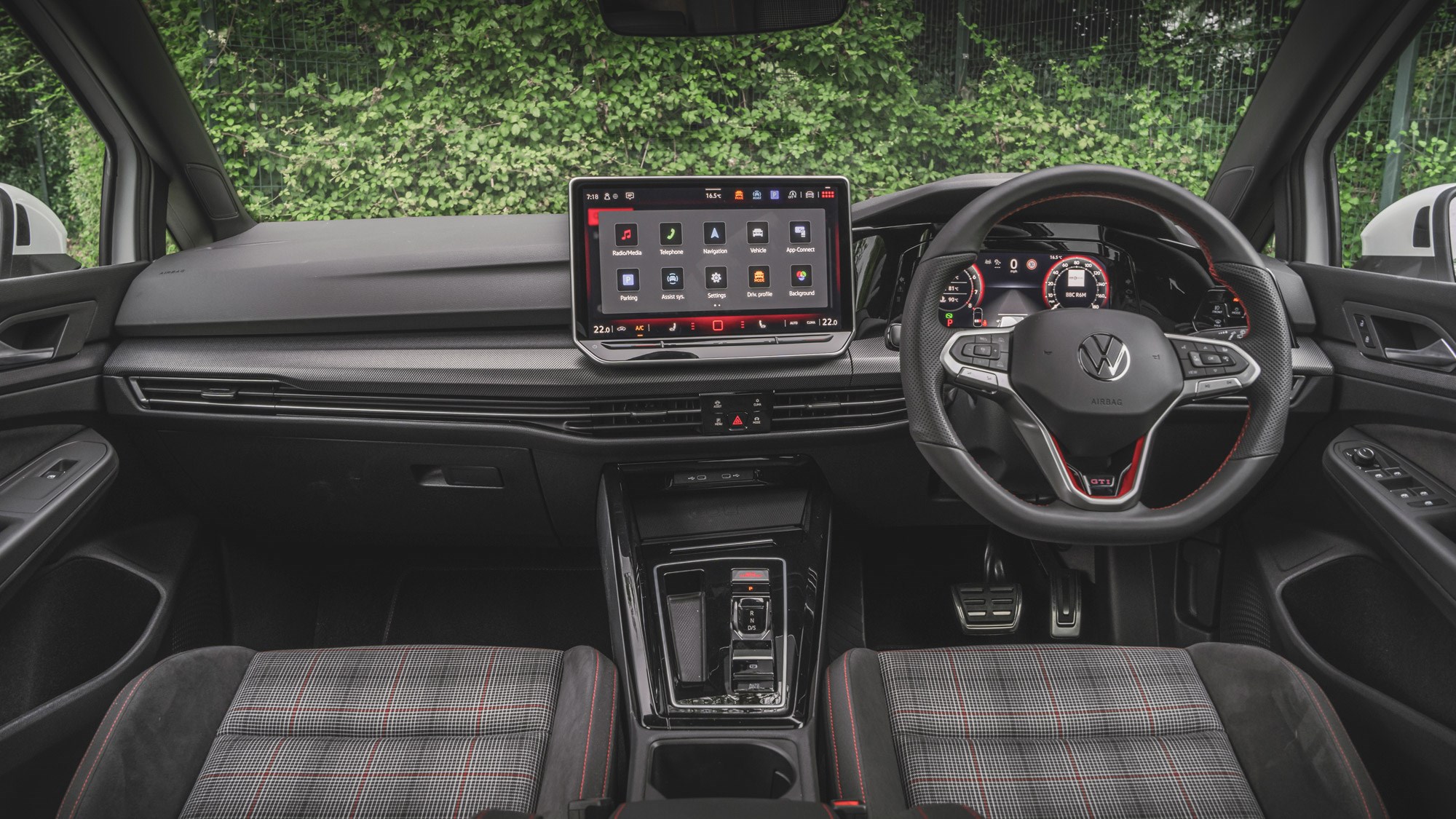
The quality has taken a welcome step up too, with more soft-touch materials helped by the GTI extras such as wonderful part-suede sports seats trimmed in the iconic GTI tartan, along with red stitching and a sports steering wheel. It’s amazing what a few small changes can make to the overall look and feel of the cabin. Yet despite this, the GTI still doubles up as a great little family car. All but the tallest adults can sit relatively comfortably in the rear seats, though the front seatbacks do protrude a bit, and the 374-litre boot seems larger than the figures suggest.
Before you buy (trims and rivals)
Prices for the GTI have increased as part of this new version, driven partly by the absence of the manual gearbox version, which was always around £1,500 cheaper. You do get more equipment for your money than before, though, including heated front seats, Matrix LED headlights and keyless entry. Other features include adaptive cruise control, a reversing camera and large 18-inch alloy wheels.
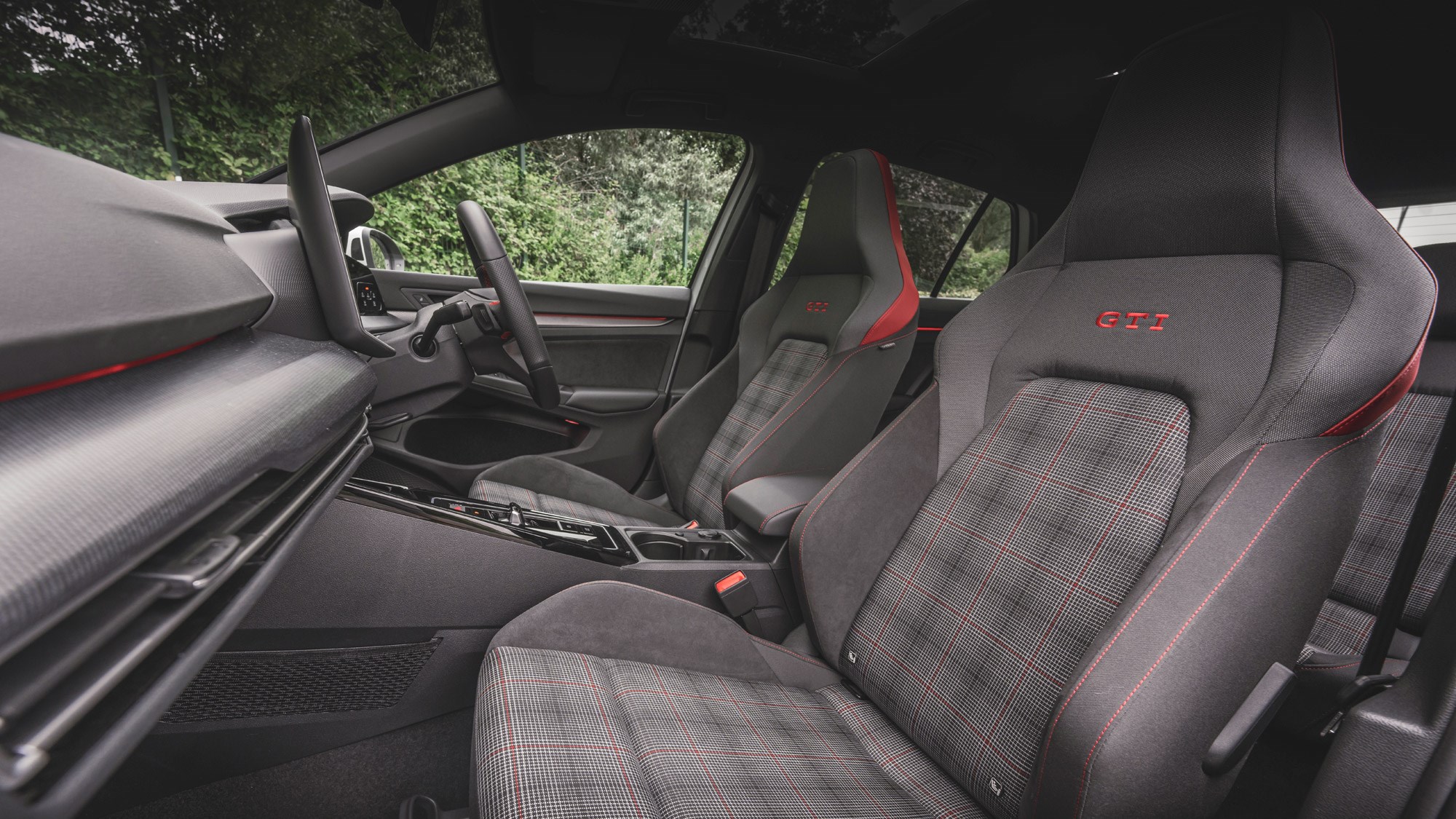
Prices for a Golf GTI start from £39,400, next to £42,155 for the GTI Clubsport and £43,895 for a Golf R. It might sound a lot for a hot hatch, but it’s worth considering the rivals. A Ford Focus ST with a similar spec would come in at north of £40,000, while a Honda Civic Type R would set you back more than £50,000. Big money.
Verdict
Like the standard Golf 8.5, the GTI has taken another step in the right direction in making it the car it should have been from the start. Interior and infotainment tweaks have made a significant difference to the general feel and usability of the cabin, and though the lack of manual gearbox might upset us from a purist’s point of view, given how few buyers were choosing it over the DSG pre-facelift, you can’t exactly blame VW for pulling the plug.
Yet the Golf GTI’s driving experience remains as impressively talented, from spending hours comfortably on a motorway to lapping up your favourite B-road, there might be more fun FWD hot hatches in the form of the Civic Type R but no other will prove such a joy to live with every day.